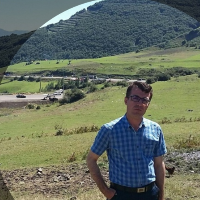Relationship of surface runoff coefficient with land use/land cover change in Samian watershed, Ardabil province
Water resource planning in different world countries is based on the potential surface resource availability. Land use changes, especially in watersheds that include cities and population centers, strongly affect the quantity of water. This study aims to determine land use/land cover changes in the Samian watershed, Ardabil. Also, investigating the relationship between land use changes and the amount of surface water in this watershed was explored.
In this study, ENVI software obtained land use for four time periods from 1993 to 2017. In order to investigate the quantitative changes of water, 5 hydrometric stations and 32 rain gauge stations within the watershed were selected, and the runoff coefficient of these stations was obtained based on the recorded data in river gauge stations. In the next step, ANOVA and Tukey test were exerted to determine the significance of changes in the mean runoff coefficient.
In the studied years, rangelands have decreased considerably by 9.75%. Also, irrigated agriculture had the highest increase, with 8.45%. Residential areas had increased in the study period by 1.42% compared to the first period. Rainfed agriculture has also increased by 3.29% in the study area.
In all studied hydrometric stations except Nir station, the changes in runoff coefficient were significant. In Samian, Aladizgheh, Atashghah, and Ghilande stations, the changes in runoff coefficient have decreased, which means a decrease in river discharge during the research period.
Innovation:
The results can be used in the quantitative analysis of the relationship between land use change and surface runoff coefficient changes. Also, based on the reduction of natural lands, it is possible to predict the increasing intensity of runoff and flooding. In addition, land use planning and management and knowledge of the amount, intensity, and spatial changes of runoff production potential are prerequisites for planning runoff control.
-
Spatial assessment and zoning of landslide risk in Zamkan watershed using support vector machine and logistic regression
Fariba Esfandyari Darabad, Ghobad Rostami, *, Mousa Abedini
Hydrogeomorphology, Autumn 2024 -
Land degradation intensity mapping using environmental factors and Sentinel-2 derived spectral indices in an arid region in south of Iran
Mohamamd Ebrahim Afifi, *
Anthropogenic Pollution Journal, Winter and Spring 2024



